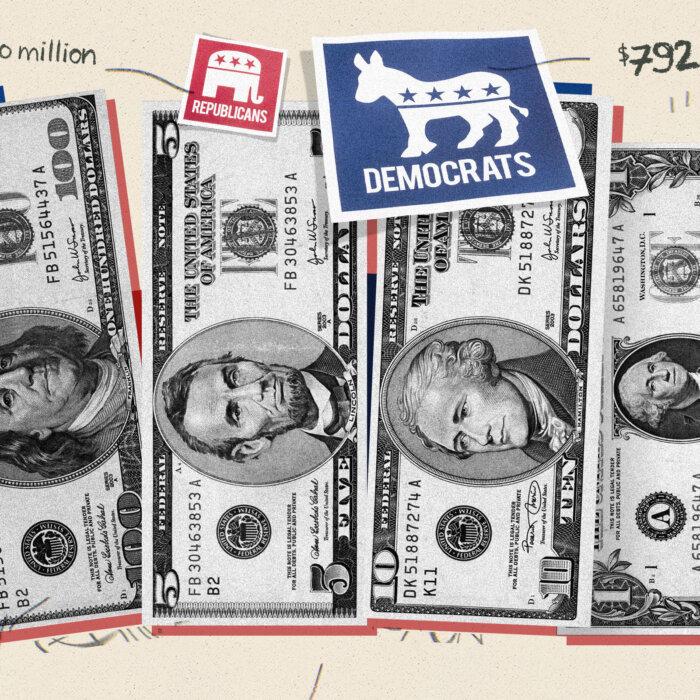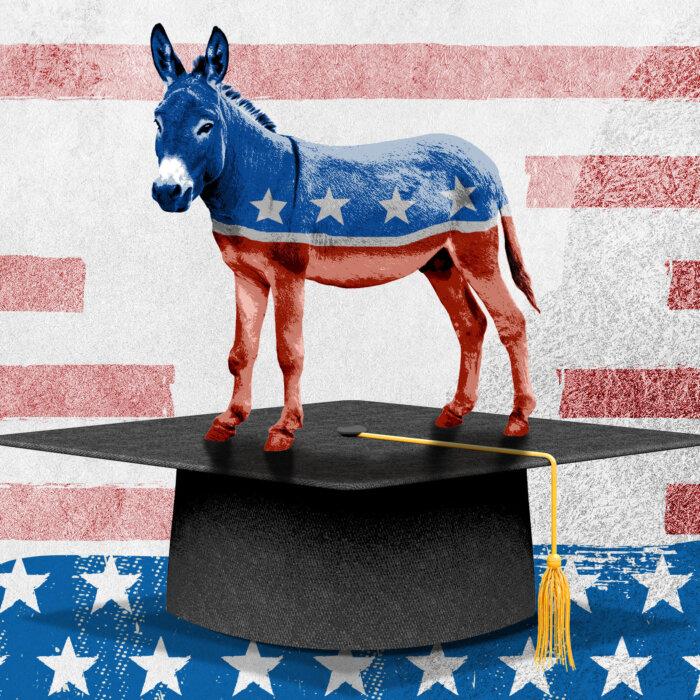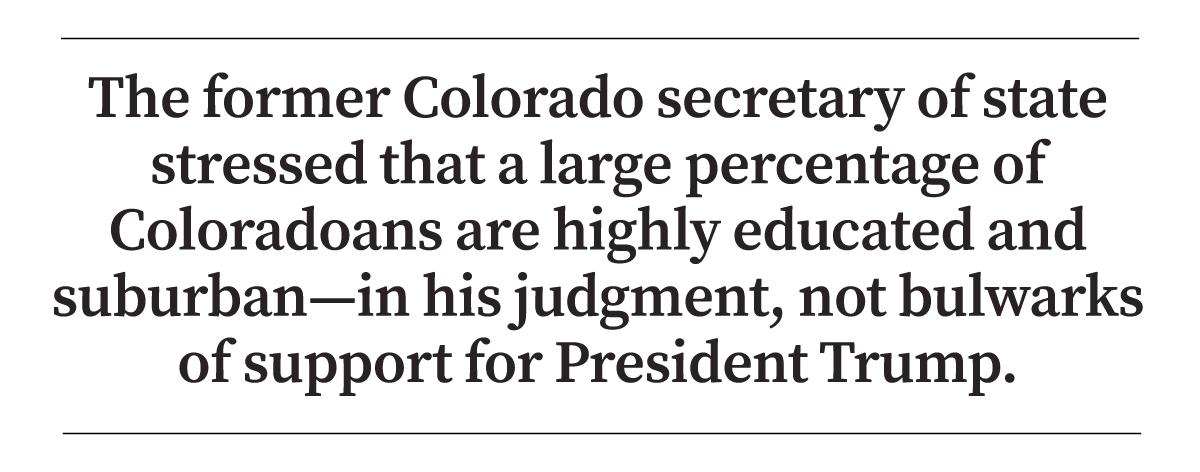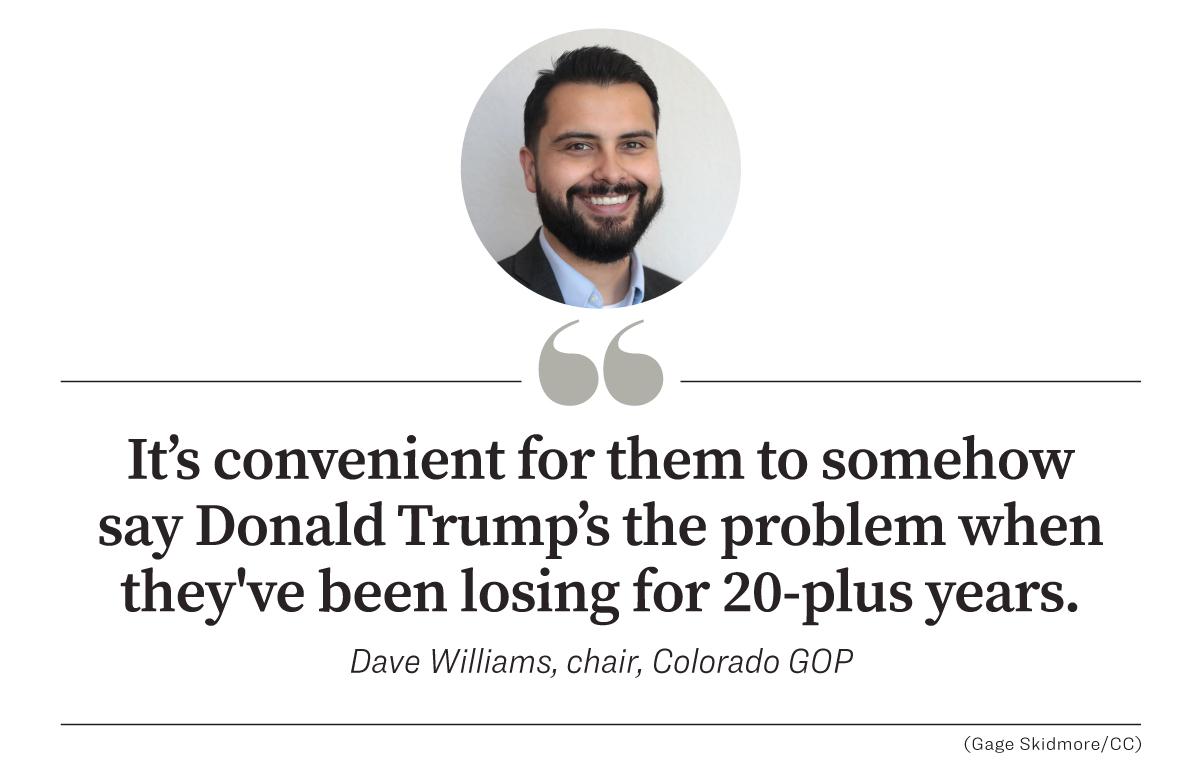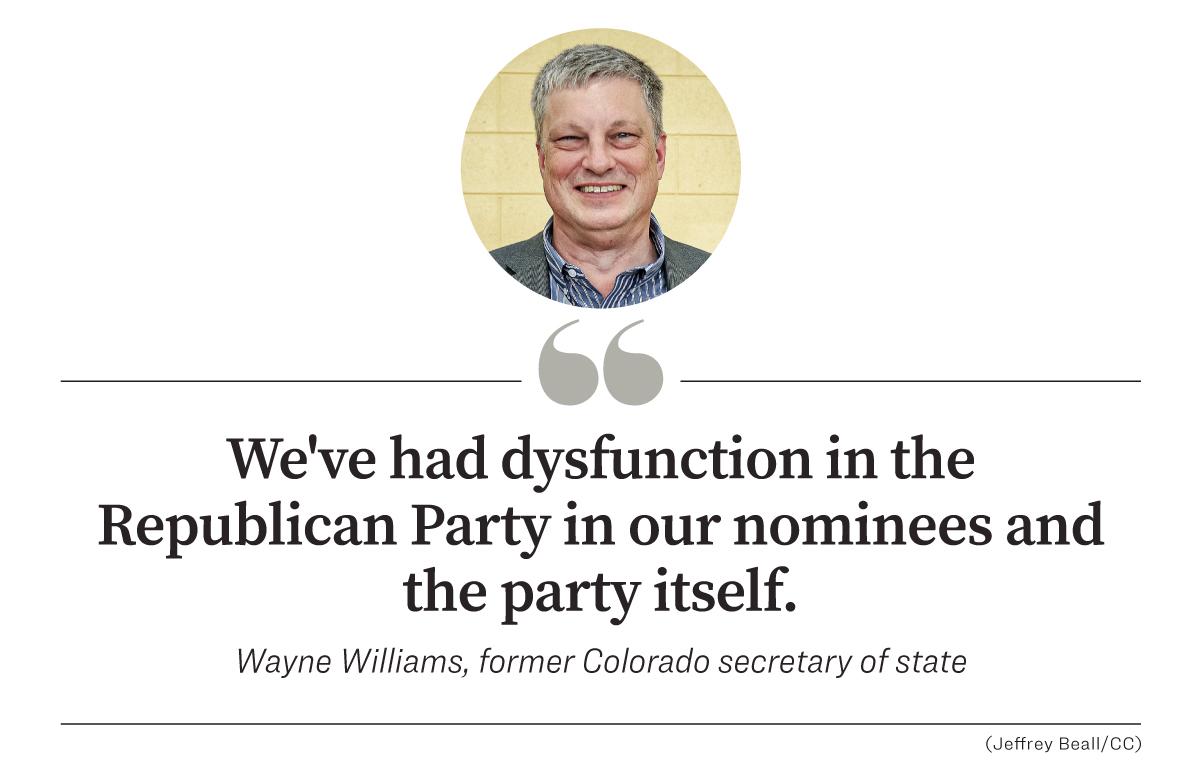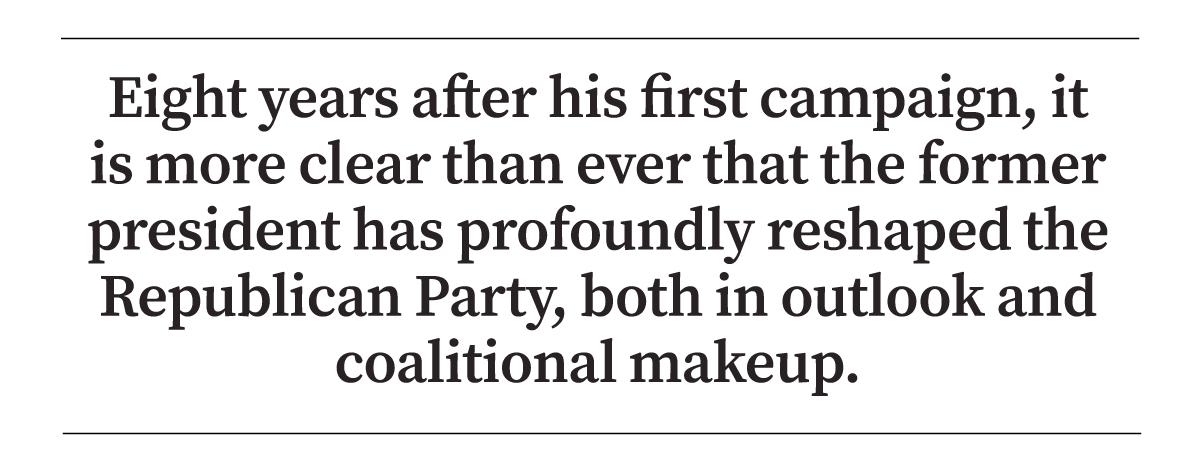Not long ago, Colorado was a GOP-leaning battleground state. But now?
“We’re not one of those,” Wayne Williams, the last Republican to serve as Colorado’s secretary of state, told The Epoch Times.
The Democrat who defeated him, Jena Griswold, made headlines in March when she said she was “disappointed” with the Supreme Court’s decision to let former President Donald Trump remain on ballots.
Younger generations may find this hard to believe, but two decades ago, the Centennial State was controlled by Republicans at almost all levels.
The state that voted a Taxpayer’s Bill of Rights into its constitution was home to Colorado Springs evangelicals, conservative rural ranchers, and irreverent, libertarian-leaning “South Park Republicans.”
The “South Park Republican” label—one of those generalizations that journalists love—dates to 2001, when the show’s co-creators, Matt Stone and Trey Parker, were accepting an award from Hollywood producer Norman Lear’s People for the American Way.
After an introduction from radio host Larry Elder, the former Coloradoans shocked the show business crowd by describing themselves as Republicans.
“I hate conservatives, but I really [expletive] hate liberals,” Mr. Stone later quipped.
“South Park,” though still liable to satirize the left, has come out strongly against President Trump. Colorado, which twice voted for President George W. Bush, has gone Democrat.
President Joe Biden won Colorado in 2020 by more than 13 percent.
Today, Colorado’s governor, lieutenant governor, secretary of state, attorney general, and treasurer are Democrats, as are both its U.S. senators and most of its U.S. House representatives. Democrats have a veto-proof majority in Colorado’s House and a near veto-proof majority in its Senate.
Even as the Trump-era GOP has gained ground in the Rust Belt and other former Democratic strongholds, Colorado provides a striking example of an opposing trend.
Like Mr. Stone and Mr. Parker, many current and former Republicans in the state seem unhappy with the party as it exists today.
One of Colorado’s few remaining national Republicans, Trump critic Rep. Ken Buck (R-Colo.), just resigned.
“Everywhere I go in Colorado, Dana, I hear people are not happy with Trump, and they’re not happy with Biden,” the lawmaker told CNN’s Dana Bash when explaining his decision to leave before the end of his term.

Colorado Secretary of State Jena Griswold exits the Supreme Court in Washington on Feb. 8, 2024. The court heard oral arguments in a case on whether or not former President Trump can remain on the ballot in Colorado for the 2024 presidential election. (Julia Nikhinson/Getty Images)
‘The Blueprint’
There’s an established conservative narrative about Colorado’s move to the left.
“The Blueprint: How the Democrats Won Colorado (and Why Republicans Everywhere Should Care)” by former Colorado state representative Rob Witwer and journalist Adam Schrager tells much of that tale. So does the Michelle Malkin-hosted documentary “Rocky Mountain Heist.”
The story goes something like this: the “Gang of Four,” a group of ultra-wealthy liberals that included now Colorado Gov. Jared Polis, hatched a plan in the early 2000s after Colorado’s Amendment 27 and the federal McCain-Feingold Act upended campaign finance. The quartet orchestrated a network of nonprofits to advance their political agenda, in part by challenging Republicans at every turn in innovative ways.
“They surprised the Republican establishment who had been in control,” Dave Williams, the chair of the Colorado Republican Party, told The Epoch Times.
“We had feckless Republicans who didn’t know what was going on, didn’t know how to combat it, and were more concerned about what pundits or the press or the media [thought] about them as opposed to simply defeating the Democrats and making sure that they don’t attain power,” he said.
In 2004, the same year President Bush won the state, its state senate and state house both flipped from Republican to Democrat. The victory become part of what Democrats saw as the “Colorado miracle.” It set a precedent locally and across the country for big liberal donors.
One key node is the Colorado Democracy Alliance, part of the nationwide Democracy Alliance (DA) donor coalition engineered by Democratic strategist Rob Stein. Benefactors of the DA have included George Soros, Tom Steyer, and labor groups such as the Service Employees International Union (SEIU), which is also a critical source of manpower for Democrats during elections.
Soon came the legalization of recreational marijuana use in 2012 and the legalization of gay marriage, done through the courts in 2014 despite a statewide constitutional ban passed in 2006 via referendum.
John Suthers, the second-to-last Republican attorney general in Colorado, said the strategy outlined in “The Blueprint” is part of the story but can’t account for Democrats’ overwhelming dominance today.
He ascribes the GOP’s decline in part to “a very small minority of people taking over the party,” ones strongly aligned with President Trump in a state where many appear to be wary of MAGA.

Giant marijuana cigarette balloons are are passed around at a rally in Denver on May 21, 2016. (JASON CONNOLLY/AFP via Getty Images)
“If you go to the caucuses tonight, it’s just, ‘Are you with Trump, or [are] you not with Trump?’ And if you’re not with Trump, you’re a RINO [Republican in Name Only], even though the vast majority of people couldn’t even tell you what’s in the Republican platform,” he told The Epoch Times.
Mr. Wayne Williams, the former GOP secretary of state, had a similar perspective. He told The Epoch Times that “The Blueprint” narrative offered only a partial explanation for his state’s transformation.
Among other things, he argued that Mr. Polis’s rise was partly enabled by Ben Alexander, Mr. Polis’s Republican opponent in his first run for office. In 2000, the “Gang of Four” insider defeated Mr. Alexander, a former state legislator, to become an at-large member of the state’s Board of Education. His margin of victory after a recount was a razor-thin 90 votes.
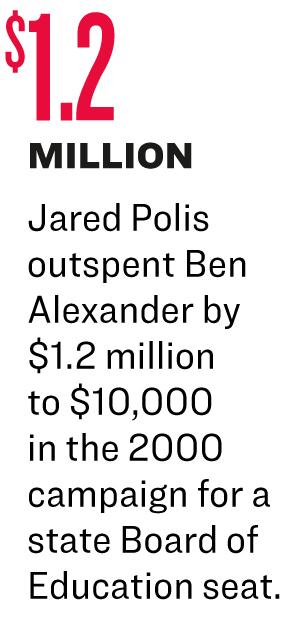
“Ben Alexander was running against a guy no one had heard of … and he didn’t campaign,” Mr. Wayne Williams said. He said he was a local GOP leader at the time, but he “never saw him [Mr. Alexander]” in El Paso County.
“Of course I thought he [Mr. Polis] was going to win!” Mr. Alexander told The Epoch Times, stressing the yawning gap in finances that separated him from Mr. Polis.
The Colorado Independent reported that Mr. Polis, an Internet multimillionaire, outspent Mr. Alexander, a property manager, by orders of magnitude: $1.2 million of Mr. Polis’s money to $10,000 in Mr. Alexander’s campaign.
“I’m surprised it was so close,” Mr. Alexander said.
He acknowledged that he didn’t campaign much outside of attending a forum in the San Luis Valley and “a little bit of advertising.” According to him, one big reason was that he was “just getting going” with his property management company.
“Somebody with $1.2 million—I’m supposed to give up everything I have to run against him?” he asked.
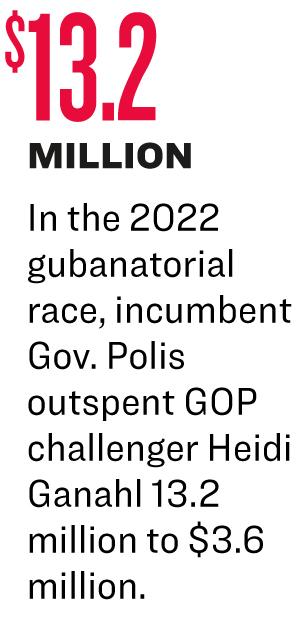
Mr. Alexander pointed out that he won El Paso County. Records from the Colorado Secretary of State show he garnered roughly 60 percent of the vote there.
Decades after Mr. Polis’s first electoral victory, his war chest continues to daunt Colorado Republicans.
The former secretary of state acknowledged that the current governor “wildly outspent” his gubernatorial opponent in 2022, Heidi Ganahl.
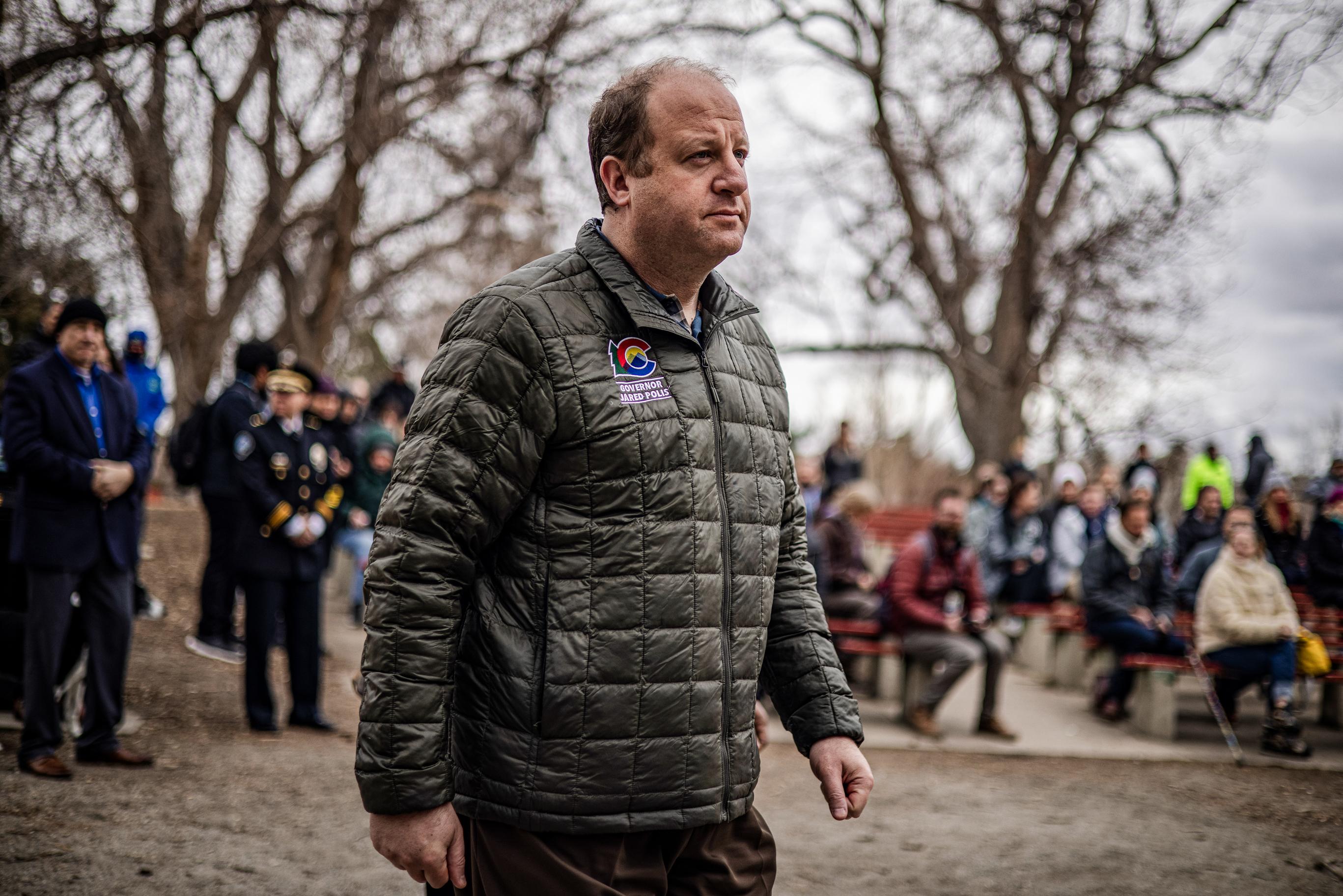
Colorado Gov. Jared Polis prepares to take the stage at an event in Boulder, Colo., on March 22, 2022. (Chet Strange/Getty Images)
Demographic Changes and the Trump Factor
Some who spoke with The Epoch Times, including Ms. Boebert, highlighted the state’s changing demographics—in particular, an influx of residents from California.
“Unfortunately, they are bringing their politics with them and voting the same way they did there,” she told The Epoch Times.
Mr. Wayne Williams said the early legalization of marijuana in Colorado “caused people to move here who were not Republican voters.”
“It’s definitely a factor. But it’s not entirely the reason,” Mr. Dave Williams, the state GO chair, said of the arrival of Californians.
Mr. Suthers was cognizant of some key changes already underway during the 2010 cycle—the first Tea party cycle—when he was one of “the last batch of statewide Republican[s].”

“I could see the demographics of the state changing—that people were moving here from places [like] California, Illinois,” he said, noting that many newcomers registered as Democrats or joined the swelling ranks of Democrat-leaning unaffiliated voters.
Two decades of data from the Colorado Secretary of State’s website reveal some vast shifts in Colorado voter affiliations.
Vote-splitting is another point of contention.
Coloradoans, Mr. Wayne Williams said, “stopped being swing voters,” saying that his state now has far more “straight-ticket unaffiliates voting Democrat” than before.
But Mr. Dave Williams, the state GOP’s head, sees it differently. He told The Epoch Times that Mr. Wayne Williams and similar “establishment” Republicans in the state mistakenly believe independent or swing voters lean left.
“These guys, their whole theory is if we just act like Democrats, but a little less, we’ll win. And that’s just not how it works,” he said.
“Swing voters swing as much as 20 percent one way or the other. And when you have that kind of swing, anyone can win the election.”
Mr. Suthers, the former attorney general, thinks there’s a Donald Trump effect stunting GOP support among at least some unaffiliated Coloradoans.
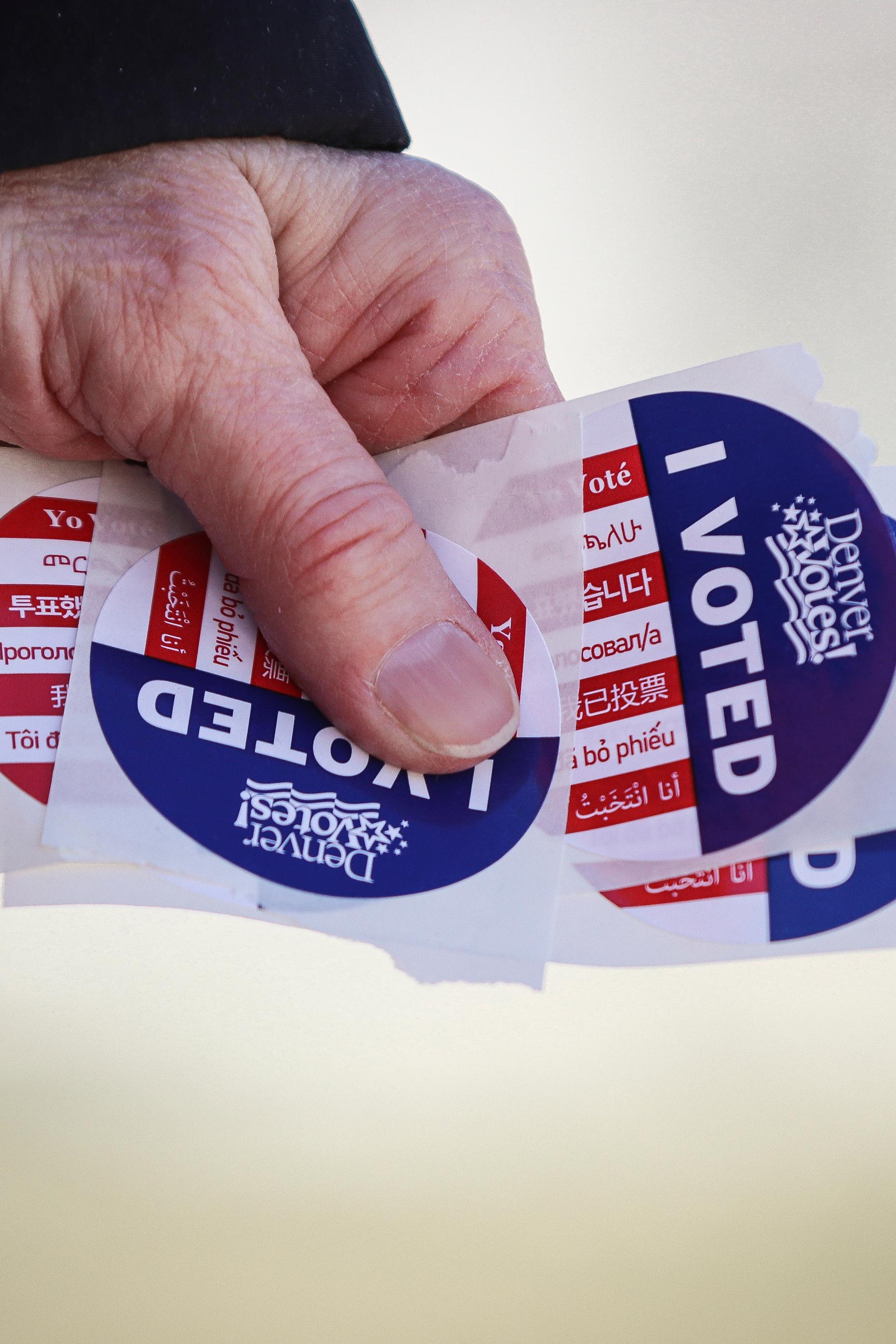


(Top L) An election judge holds ‘I Voted’ stickers while collecting drive-thru ballots in Denver on March 5, 2024. (Top R) An election judge works at the Denver Elections Division during the presidential primary in Denver on March 5, 2024. (Bottom) Customers watch a broadcast of former President Donald Trump’s Super Tuesday victory speech at a bar in Sedalia, Colo., on March 5, 2024. (Marc Piscotty/Getty Images, Jason Connolly/AFP via Getty Images)
“I think there’s a large group of unaffiliated voters out there who are truly unaffiliated and are willing to go either way, but in the current climate in the country simply cannot bring themselves to vote Republican because frankly, they see it as the party of Donald Trump and they want nothing to do with it,” he told The Epoch Times.
“Donald Trump’s demographic appeal is not Colorado,” said Mr. Wayne Williams.
He noted that Ms. Boebert, seen as an avatar of the MAGA movement, plans to contest a “rural and Republican” district—the 4th District—dissimilar to much of the rest of the populated parts of Colorado.
“That’s why she’s running on the east side of the state,” he said.
The former Colorado secretary of state also stressed that a large percentage of Coloradoans are highly educated and suburban—in his judgment, not bulwarks of support for President Trump.
For years, college-educated white voters have been moving into the Democrats’ camp. In the GOP, meanwhile, they’ve drifted down as a share of the base.
Exit polling in 2020 conducted by Edison Research showed that white college graduates in Colorado heavily favored President Biden over President Trump, delivering him 67 percent of their vote to just 30 percent for the incumbent.
In fact, they were more pro-Biden than nonwhite college graduates in the state. Fifty-nine percent of that demographic voted for President Biden, while 40 percent chose President Trump, according to Edison.
Other demographic trends could also be at play. Colorado in 2020 was 21.9 percent Hispanic, according to the Census Bureau, up from 17.1 percent in 2000. The non-Hispanic white proportion of the state also fell significantly in recent decades, from about three-quarters of the population in 2000 to two-thirds in 2023.
The trend looked similar in Colorado Springs, where Mr. Wayne Williams lost a 2023 bid for mayor. It was calculated to be 75.3 percent white alone and 12 percent Hispanic of any race in 2000. By 2022, the non-Hispanic white alone percentage had fallen to 66.2 percent, while the city was almost 19 percent Hispanic or Latino.
Yet, while nonwhite voters have historically leaned towards the Democrats, Edison Research’s 2020 exit polling showed that a slightly higher percentage of nonwhite Colorado voters voted for President Trump than white Coloradoans, in line with the results from nonwhite college-educated voters.

A voter hands over his ballot to an election judge outside the Denver Elections building while walking his dog in Denver on March 5, 2024. (Marc Piscotty/Getty Images)
Mr. Dave Williams pointed out that Republican and Republican-aligned candidates in Pueblo, Colorado, performed well during the November 2023 election. They turned the city council and county commission in Pueblo, Colorado, red.
That city, unlike Colorado Springs, is half Hispanic or Latino, while the wider county is 44 percent Hispanic or Latino. Additionally, median household income in Pueblo, at $52,794, is also significantly lower than in Colorado Springs, at $79,026.
Mr. Dave Williams observed that Pueblo was “a strong blue-collar, union, Democrat stronghold” before President Trump hit the scene. He believes the recent conservative gains prove there’s a conservative resurgence afoot.
“I don’t see John Suthers or Wayne Williams or the mainstream media talking about how Colorado’s shifting to the right, because it doesn’t fit their narrative,” he said.
“It’s convenient for them to somehow say Donald Trump’s the problem when they’ve been losing for 20-plus years,” he added.
In response, Mr. Wayne Williams said “Yes, we are doing well in Pueblo … but this is an exception in Colorado.
“President Trump continues to be popular in Pueblo, but arguing that’s the case statewide would be disingenuous,” he said.
The results in November will go a long way toward showing who’s right, or at least who’s relatively less wrong.
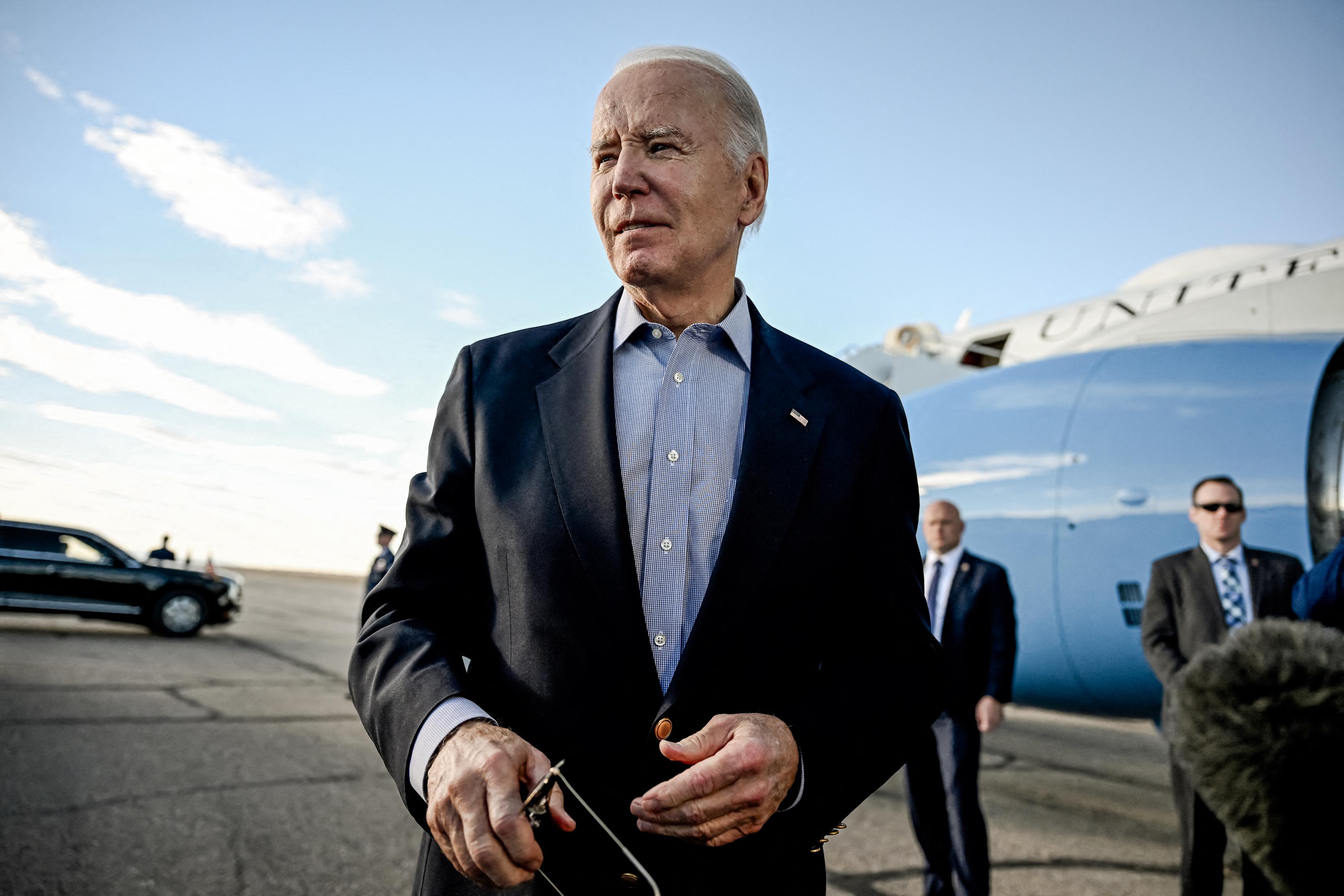
President Joe Biden speaks to reporters before boarding Air Force One at Pueblo Memorial Airport in Pueblo, Colo., on Nov. 29, 2023. (Andrew Caballero-Reynolds/AFP via Getty Images)
An Epidemic of Infighting
Another serious concern of some local GOP backers became clear during conversations with voters on Super Tuesday, March 5.
As a strong wind whipped through the Front Range, one primary voter in the El Paso County city of Monument, Colorado, described herself as someone who would “love to run for office someday” as a Republican, but “not right now.”
Why not?
That voter, Allison Thompson, told The Epoch Times that people in the local GOP “fight all the time over the dumbest things.”
Infighting was a central theme of many insiders who spoke with The Epoch Times.
Mr. Wayne Williams noted in disbelief that the current chair of his county’s GOP, Vickie Tonkins, publicly opposed multiple Republican nominees just days before the November 2022 election. The state GOP formally censured her for that several weeks later.
“We’ve had dysfunction in the Republican Party in our nominees and the party itself,” he said.
Mr. Suthers said his last visit to Colorado’s GOP caucus was “the most unpleasant experience of my life.”
“There’s just no nuance allowed,” he said.
Mr. Alexander said he witnessed “some of this” when he was in the state senate.
“If you’re not pure, we’ve got to get somebody to run against you to take you out,” he recounted. He argued that attempts to replace moderates with conservatives ultimately cost the party seats in his Rocky Mountain state.
The clash over infighting extends to the two Colorado Williamses, Wayne and Dave.
The former secretary of state said the state GOP has “spent more time attacking Republicans than Democrats” under Mr. Dave Williams’ leadership.
“These guys want to blame me for how the party is when they’re the ones that got us here,” Mr. Dave Williams said of the criticism from the other Williams.
“Truth is, we’re turning things around. We’re actually engaging the base. We’re giving more power back to the grassroots than they’ve ever seen, and rightfully so,” he said.
President Trump recently praised Mr. Dave Williams on his Truth Social platform after the state GOP head kicked a local reporter out of the state assembly.

(L–R) North Dakota Gov. Doug Burgum, President Donald Trump. and Colorado Gov. Jared Polis meet in the White House in Washington on May 13, 2020. (Doug Mills-Pool/Getty Images)
Colorado vs. Ohio in the New GOP
A little more money, a little more politicking—in the most critical states, counties, and down-ticket races, a little could go a long way in the fight for 2024, where the presidency is the prize on everybody’s mind.
“I trust Donald Trump and his team are going to come in and right the ship,” Mr. Dave Williams said of the new, Trump-aligned RNC leadership.
But the nationalized Colorado model and broader demographics shifts within and across states, including the leftward drift of college-educated white voters, might prove harder for the GOP to overcome in the long run.
Moreover, an RNC dominated by President Trump’s message and picks may not be positioned to gain ground with anti-Trump diehards in Colorado and similar states.
Of course, past reports of the Republican Party’s impending demise have proven to be premature.
John Judis and Rudy Teixeira’s 2002 book, “The Emerging Democratic Majority,” forecasted that a permanent Democratic majority would soon coalesce, partly due to America’s increasingly nonwhite demographic makeup.
Then came President Trump’s shock 2016 victory and a contested 2020 loss. He won a record number of votes in 2020 for a sitting U.S. president and picked up steam among Hispanic Americans.
Some recent polls have shown President Trump leading President Biden among Hispanic voters.
Mr. Suthers projects there will be “a fairly phenomenal comeback” for the GOP in his state once President Trump leaves the scene.
Yet, eight years after his first campaign, it is more clear than ever that the former president has profoundly reshaped the Republican Party, both in outlook and coalitional makeup. With each passing year, it becomes harder and harder to imagine the GOP returning to a vehicle for the likes of Sen. Mitt Romney (R-Utah).

Former President Donald Trump listens as North Dakota Gov. Kristi Noem speaks during a rally in Vandalia, Ohio, on March 16, 2024. (Kamil Krzacynski/AFP via Getty Images)
President George Washington famously disapproved of factions. Yet, American political equilibrium always seems to involve two parties—and elements within the nation’s dynamic system are never all moving in the same direction at any given point in time.
Blue-shifted Colorado has a kind of antipode halfway across the country, in red-shifted Ohio.
Once a deep purple bellwether state, Ohio is increasingly dominated by Republicans both locally and nationally, including MAGA-world stars like Sen. J.D. Vance (R-Ohio) and Rep. Jim Jordan (R-Ohio).
The state that President Barack Obama won in 2008 went for President Trump in 2020 by eight points. Today, the nonpartisan Cook Political Report rates it solidly Republican ahead of election day.
What’s more, the home state of President William Howard Taft, Sen. Robert Taft (R-Ohio), Dennis Kucinich, and Mr. Vance can boast a long history of skepticism in regard to interventionist foreign policy.
All in all, Ohio isn’t a very “South Park Republican” state—although it did just legalize recreational marijuana.
At some level, that’s to be expected. Political coalitions begin and end with tradeoffs—some implicit, others negotiated through Trumpian “dealmaking.” The flavor of GOP that wins Ohio and loses Colorado might still come out ahead nationally, and vice versa for Democrats.
Today, though, both places matter less to the presidency than today’s battleground states: Arizona, Michigan, Nevada, Wisconsin, Pennsylvania, Georgia, and North Carolina.
The 2024 election could be decided at the margins of today’s purple patches, in key urban and suburban counties that often proved decisive in 2020.
Part two of this series will examine a few of them.
Original News Source Link – Epoch Times
Running For Office? Conservative Campaign Consulting – Election Day Strategies!

